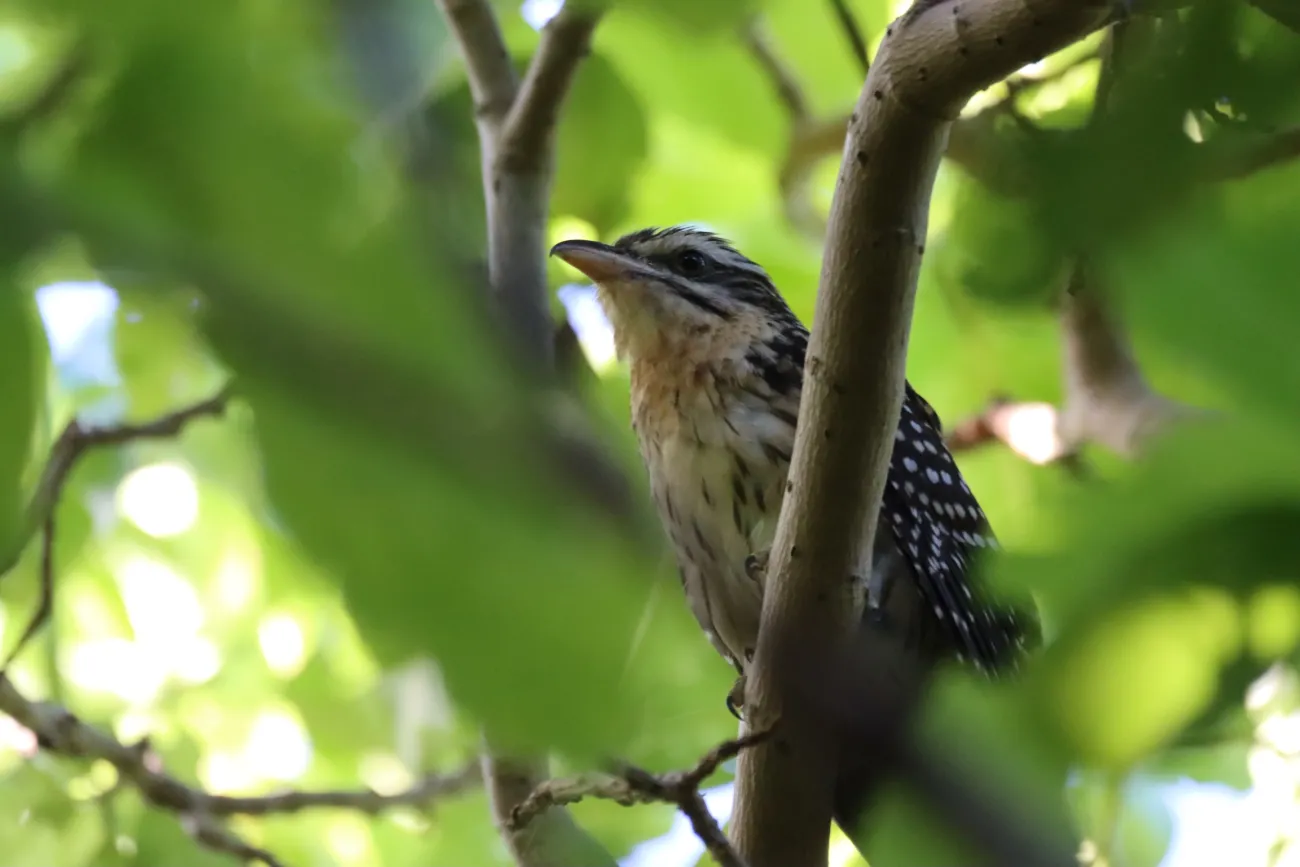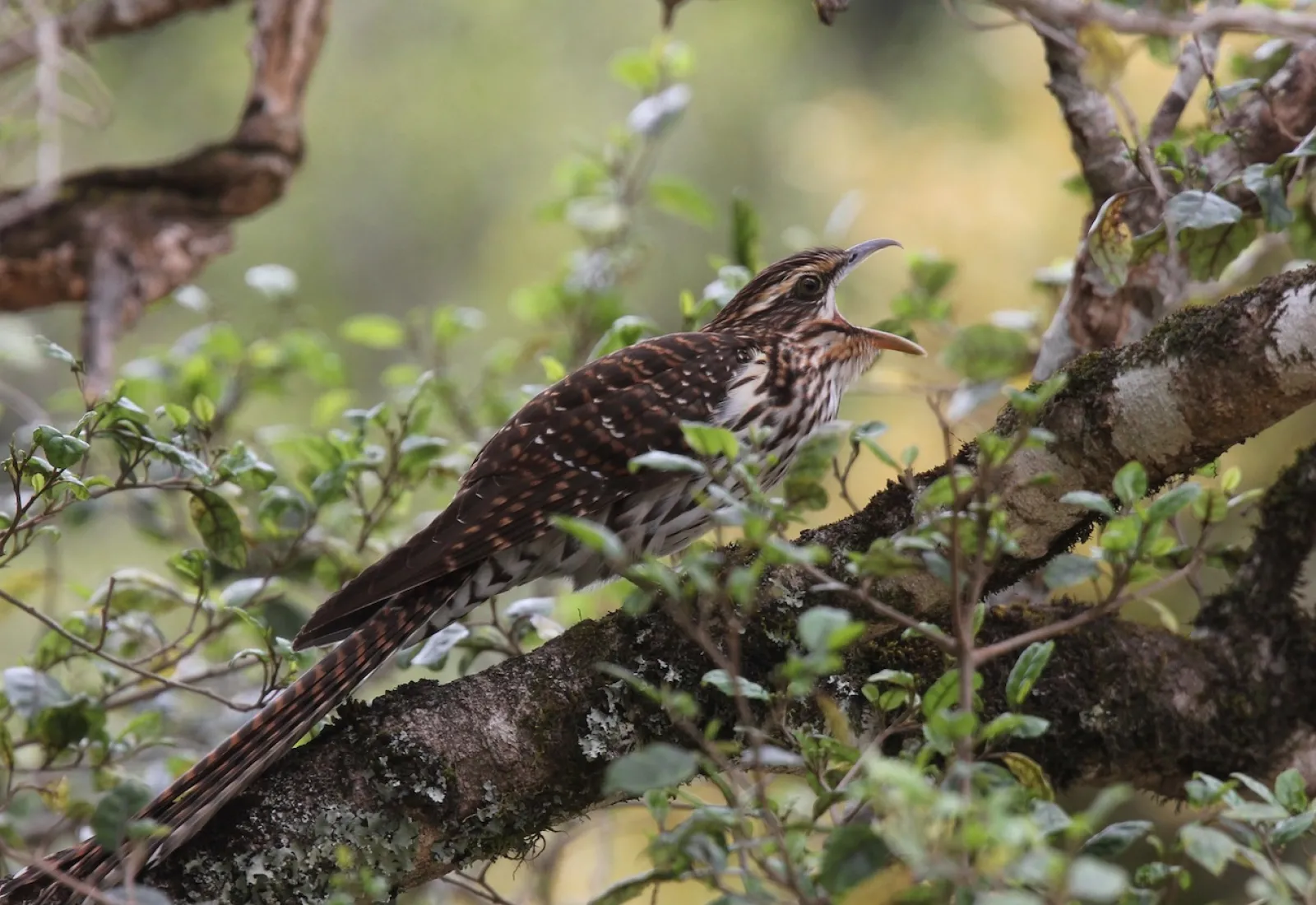This bird winters on Tetiaroa, and is most often heard rather than seen.

Urodynamis taitensis is known to predict rain. Shy and swift in flight, it’s difficult to spot it in the canopy, but nevertheless, you will know that the long-tailed cuckoo is around thanks to its loud screech. In fact, on Tetiaroa, it is most often heard rather than seen. On the islet of Onetahi, where The Brando resort is located, it is often identified near the staff village. Many of the staff feel privileged upon seeing or hearing it.
When the austral winter approaches the atoll, we start hoping for a glimpse of the Long-tailed Cuckoo. As culturally important as Fregatebirds and birds in general, the ’Arevareva, as it is called in Tahitian, is considered to be sacred, and regarded as an emanation of God of Creation Ta’aroa. It is usually a bird of bad omen. It is also believed to have initiated the migration of Polynesian navigators to New Zealand.
Adult long-tailed cuckoo calling while in flight - image © Adam Clarke

image © Adam Clarke - Long-tailed cuckoo juvenile being fed by whitehead foster-parent.
Polynesians enjoy the presence of this bird of prey from April to September, when it winters in French Polynesia. During this time, food resources for cuckoos are abundant: small vertebrates, lizards, insects, etc. Its native and breeding habitat is, as its name suggests, the native forests of New Zealand, particularly the forests where birds of the species Mohouidae nest. The long-tailed cuckoo is brood-parasitic; it lays one egg in the nest of another bird, which will care for the egg and chick.
This beautiful bird has a distinct morphology and plumage that differs from other birds visible on the atoll. Adults measure 40 centimeters long, they have a raptor-like head, armed with a short and strong yellow beak. Unlike other migratory birds on the island (golden plovers, bristle-thighed curlews and wandering tattlers) they have short legs. Cuckoos are easily recognizable by their long, striped tail feathers which they lift during displays.

image: Phil Bendle
Image caught by a patient birder on Onetahi
TIPS FOR OBSERVATION:
If one day you look for ‘Arevareva in its natural habitat, listen attentively.
Once you hear its screech, try to establish contact with the bird, imitating its sound. It may whistle back to you and come closer. If you’re lucky enough, or rather unlucky ; ), you might see it.


